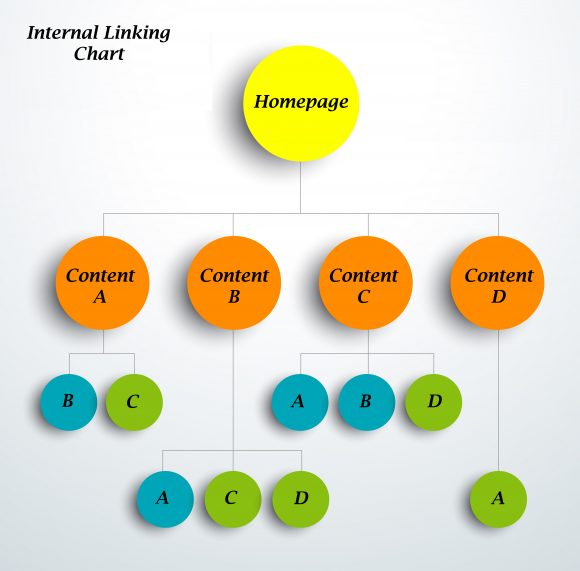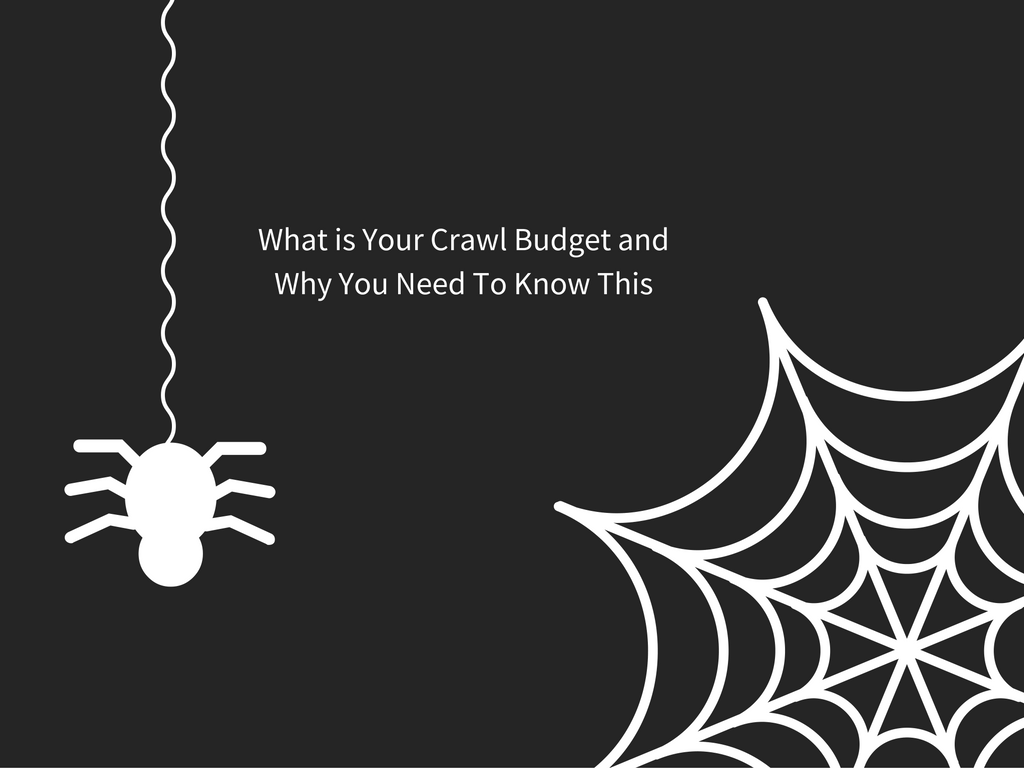Internal Linking and SEO Best Practices
One of the great things about raising your visibility through search engine optimization is that you can get a lot of link juice with a few simple changes to how your produce and present your content. One well-known way of improving your SEO is through external links from relevant, popular sites that point to your content. A method of improving your SEO that’s a little less understood is internal linking and its many benefits. If you aren’t including internal links in your webpages, you’re losing out on what could be a substantial boost in your Google rank.
What is Internal Linking?
An internal link is a link on your website that points to another page hosted on your website. For example, if a blog post on your page references a product you’re selling, you could link to that product. You could also link to your homepage, frequently asked questions or another post that sheds light on a topic mentioned in the one with the link. The important thing about internal linking is that the source and target link are on the same domain.
What’s the Point of Internal Linking?
Internal links serve a few different purposes on your website. For one, they create a roadmap of your site that helps people navigate. A clear webpage structure makes a better customer experience. Another thing they do is educate your visitors on what topic you’re writing about. Sometimes concepts are too complex to be explained in a single post, and linking to another can help your visitor find more information to clear things up.
These links also help create more links on your site, which can benefit your Google rank and help make your site more visible to interested searchers. One of the major benefits of internal linking is its ability to make more of your pages indexed, which is another way to increase your visibility.
Internal Links and Google Crawlers
Google indexes the web with robots called crawlers. They go to a website and index the content, then follow links to new pages to index those as well. When content is indexed, it is available to searchers on Google.
Internal linking gives the crawlers a new way to find pages on your website. It creates links for them to follow. It helps Google index your pages and display them in search results, which increases your potential visibility. Since Google only updates their indexed content so often, creating new links to your pages may increase the rate of refresh for your site.

Internal Links and Crawl Limits
When designing an internal linking strategy, keep in mind that search engine crawlers have limits to the amount of links they can crawl. Google recommends that you keep the number of links to a few thousand at most, as of 2017. In the past, however, Matt Cutts of Google recommended keeping links on a page to less than 100, Google dropped this recommendation later in 2008 but also reinforced that they would take action if a page was deemed to be linking out for spam purposes.
When linking internally it is also important to keep your crawl budget in mind. This is the number of pages on your site that Google bots are able to crawl.
What is Your Crawl Budget and Why You Need To Know This
Since you also want to keep the page looking natural and not like it was link-stuffed, go easy on the internal links. Link totals include every link on the page, including the header, footer and any sidebars. If you can work in two or three internal links in a few thousand words, you’re doing the right thing.
That’s not to say that there aren’t times when more internal links are useful. If you’re setting up an index page or doing an overview of a topic to help people find more in-depth articles, link away. But in general, go easy on the internal links. Just a few to help readers and crawlers find their way to new pages can do wonders for your website navigation and SEO.
Types of Internal Links to Use
Use links in places where there is a convincing connection between the two pages. Ask yourself: is this relevant enough that a reader would want to click the link to see more information about it.
Use links that reach deep within the content of your site, not only links to the surface. While a link to your homepage is technically an internal link, it’s unlikely that it will deliver the same search engine optimization benefits as a link into deeper content, like blog posts or answers to reader’s questions that have been submitted to the site.
Types of Internal Links to Avoid
One type of link to avoid is a nofollow link. Since crawlers are using the link to get deeper into your site and index more pages, nofollow links counteract this. Crawlers generally only continue to the next page when the link is formatted as a follow link. Google doesn’t like to see webmasters doing this as it looks like ‘page rank sculpting’ which is when you try and force Google bots to only flow to certain pages to boost their value.
“Nofollow is probably never the answer, especially on your own site. I can think of corner case scenarios where the target page would be robotted for whatever reason, and then if it is robotted and not indexed yet, if you don’t want to get that page indexed, then you probably don’t want to point to it with anchors”
Gary Illyes, Google
Matt Cutts did say back in 2013 though that its ok to nofollow a link to a page that contains something such as a login form:
Don’t have your internal links be the same on every page. Most webpages have a setup where links to major content are linked on every page. Examples include: contact us, the homepage or business hours. Avoid the mistake of making no variation.
Some examples of links that won’t be crawled are:
- Links kept behind forms won’t be indexed. Crawlers won’t submit forms.
- Some links are only accessible through an on-site search. These won’t be indexed. This is one of the most common causes of links not being crawled.
- Flash, Java and similar plugins can prevent crawlers from accessing the links on them.
- Links in certain types of Javascript won’t be crawled. It’s almost always better to use normal HTML links.
As you build internal links, decide what you want to focus on. You can focus on spreading many internal links through your site. Another strategy is promoting certain pieces of well-written content on many different pages. Either way, work to structure your links so they’ll be crawled. Your site will benefit from the new links and crawlers may find pages they haven’t before.
Internal Linking and SEO
Internal linking combines some of the most important components of search engine optimization into one task: linking, content, indexing, and refresh rates. Though you won’t get the same juice as you would from an external link from a high-authority site, you still get a boost when Google crawls and indexes your pages more often.
When your search engine optimization is increased, you’ll see your Google rank climb. Since pages at the top of Google’s search results for a term get significantly more traffic than those lower on the list, it’s worth the effort you put in to increase your rank.
Internal linking can also help increase your traffic and SEO by returning more of your pages in search results. More links mean more crawling means more pages indexed by Google. Those indexed pages can be returned in searches for the keywords you’re targeting. In that way, your site may rise above one that doesn’t use internal linking.
Internal Links and Reader Engagement
Another benefit of internal linking is that you can increase reader engagement. A good link structure will make your site and content easier to navigate for readers. One benefit is that a clear link to supplementary content will add value. Adding value will make your site more appealing to a visitor.
The easier and more helpful your site, the more interested people will be in returning to it later. Since returning visitors are more likely to make a purchase on your site, it pays to keep people coming back again. This is another reason why fresh content is essential and helps an internal linking strategy–it keeps people coming back and following links to your pages, establishing you as an authority and building the trust that inspires people to purchase products or services.
Internal Links and Niche Authority
Linking to your own material can also help increase your own authority in your niche. While linking to outside websites also has value, you show that you know your stuff when you use internal links properly. Since building your niche authority can help you build relationships with other businesses, attract customers, and offer external link trading capabilities, it’s good to position your brand as an expert.
Pages that define terms, elaborate on mentioned concepts, or highlight some area of expertise that you excel in can position you as an authority. Linking to those exposes your brand knowledge and awareness to other people. If you have more relevant and substantive content on your site, they know that you know as much or more than your competition.
Creating Linkable Content

One trick to internal linking is to create lots of content. The more content, the more potential links and places to link on your site. Since updating your content regularly helps improve your Google rank, increasing the content production on your website is a good idea for more reasons than one anyway.
To create content that is easy to make relevant links to, take a look at your old posts and consider how they might connect to new content. Don’t force it, though. You don’t want to sacrifice the quality or readability of your content to link to other pages on your site.
If you already have a lot of content that isn’t linked, go through and update it to add links to relevant pages. To make it natural, consider adding a sentence or two to refresh the old content when you revisit it. Add the link in the new content. In this way, you’re making it fit naturally and it will be easier to read.
Formatting Internal Links
Always format internal links the right way. Not doing so many detract from their benefits. The link structure you’re creating is designed to help Google find and index pages on your website.
A normal, follow link should work perfectly fine with internal linking. Also, if you’re trying to get very good results for a particular page, consider making the link more visible. Place it in the content with a good anchor text: keep it succinct, relevant to the link, and don’t make your anchor text too keyword heavy.
Many websites are designed in such a way that Google can’t easily index their content. Having the pages linked the wrong way can inhibit the crawling activity. This keeps your site from being indexed and returning as a search result. If your pages aren’t linked properly, Google may not even know they exist. Google can’t return what it isn’t aware of in search results.
Keep Your Internal Links Relevant
Adding internal links to your website isn’t just about shoehorning them in where they fit. It’s important that they’re relevant to the content of the source page. Ask yourself whether the links adds value to the page. If it does–and is formatted and selected properly–then you have a perfect internal link. If it isn’t, remove it and use a link that does give a reader more value.
Before placing a link, determine whether it’s relevant. Ask yourself whether you’d find it interesting and educational if you were reading the page. Picture yourself as a customer and ask whether that link would seem natural and useful to you. If you think it would be, then add it to your page.
If you aren’t already using internal links in your content, start today. It’s a simple and easy way to increase reader engagement and improve your search engine position. On top of that, it makes your site more easy to navigate and can supplement your content.
As you work to increase your position as a brand authority, internal linking should become a commonplace feature of your site. The benefits over time will be substantial.



Thank you for sharing such a valuable blog !! great blog mate!!